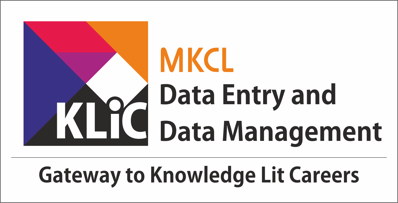- In this course, you will learn to:
- Define the basic features and functionalities of Microsoft Excel, including worksheet navigation and data entry techniques
- Identify different types of data in Excel and classify them according to their respective formats
- Organize spreadsheet data effectively using Excel's formatting tools
- Summarize the process of creating and customizing Excel tables
- Compare various data editing techniques in Excel, including custom lists, cleaning data, and using the Find and Replace feature
- Report on the usage and benefits of Flash Fill for effortless data transformation tasks in Excel
- Diagnose common sorting and filtering challenges and operate Excel's sorting and filtering features
- Find and predict specific information from dates in Excel using functions such as WEEKDAY, WEEKNUM, and NETWORKDAYS
- Compare different methods of data validation in Excel and examine their applicability in preventing errors
- Categorize fundamental text functions in Excel, such as extracting text, formatting numbers, and converting values
- Differentiate between various lookup functions in Excel and rate their efficiency in retrieving specific information from datasets
- Explain the main features and functions of Microsoft Word for word processing and document formatting tasks
- Organize Mail Merge functionality in Microsoft Word to create personalized documents efficiently.
- Find the appropriate tools and techniques for creating engaging presentations in Microsoft PowerPoint, including transitions, animations, and setup options

Data Management and Quality Assurance Processes
Understand how to maintain data integrity and ensure quality. Learn auditing, validation, and compliance techniques.
Introduction
What you'll learn ?
- At the end of this course, learners will be able to:
- Create Microsoft Excel tables, Google Docs, and Google Sheets documents to organize and analyze data effectively.
- Design visually captivating presentations using Microsoft PowerPoint, integrating appropriate slide transitions
- Formulate complex formulas and functions within Microsoft Excel, enabling advanced data analysis tasks
- Estimate the accuracy and reliability of data cleaning and quality assurance processes
- Defend data editing methodologies and decisions, substantiating choices with industry standards and project-specific requirements
- Compare different data validation techniques in Excel and Google Sheets, assessing their efficacy in upholding data integrity standards
- Review data transformation processes, identifying areas for enhancement and optimization to streamline workflows.
- Rewrite poorly formatted documents in Microsoft Word, applying advanced text formatting and layout techniques
- Construct complex formulas and functions in Excel to effectively address real-world data manipulation challenges and streamline analytical processes
- Appraise the effectiveness of various sorting and filtering techniques in Excel
- Combine diverse datasets from multiple sources in Excel, Google Sheets, and Google Docs, enabling the creation of comprehensive reports and analyses
- Interpret data visualizations and charts generated in Microsoft Excel, extracting actionable insights
- Illustrate the steps involved in document conversions, showcasing proficiency in converting files between different formats
Syllabus
- Microsoft Office skills
- Microsoft Excel
- Basics of Spreadsheet and Formatting: Features of Spreadsheets
- Features of MS excel, Starting Excel, Excel Worksheet
- Data Types, Navigation the worksheet, Entering & editing Data, Modifying worksheet, Paged Breaks, Page Setup, Print Preview
- Home tab & Formatting Tools, Formatting cells using dialog box, Formatting Column & Rows, Formatting Worksheet using cells style & applying style, Auto format.
- Entering Text, Numbers and Dates
- Creating Text, Number and Date Series
- Formula, Functions and Chart: Introduction & Objective of formula, Using
- formulas, Functions, Charts, types of charts, to use more function.
- Inserting and Deleting Rows, Column
- Changing Cell Height and Width
- Editing Worksheet Data
- Sort and Filter - Advanced filter
- Adding comments
- Worksheet Protection
- Capturing data through images (Get data from image) in Excel using OCR
- Get data from various sources in Excel (From website, from text files, from folders, from pdf etc.)
- Fill options and other functions in Excel
- Solver Add-In
- Excel Shortcuts
- Creating Excel Tables
- Styling and Customizing Tables
- Using Total Rows in Tables
- Removing Duplicate Data
- Resizing and Renaming Tables
- Sorting and Filtering Data in Tables
- Advanced Filtering in Tables
- Slicers in Tables
- Converting Tables to Ranges
- Working with Custom Lists
- Cleaning Data
- Find and Replace
- Using the Go To Feature
- Selection Pane
- Select Objects
- Flash Fill for Text
- Flash Fill for Dates
- Flash Fill for Numbers
- Flash Fill for Splitting Text
- Default Fill Series
- Text Fill Series
- Number Series
- Date Series
- Justify
- Fill Options
- Basic Data Sorting
- Sorting with Multiple Criteria
- Sorting by Color
- Customized Data Sorting
- Basic Data Filtering
- Filtering by Color
- Advanced Data Filtering
- Finding Unique values using Filter
- Advanced Filtering with AND & OR Conditions
- Find Quarter and Year From Dates
- Adding and Subtracting Days
- Adding and Subtracting Years and Months
- WEEKDAY and WEEKNUM Functions
- NETWORKDAYS Function in Excel
- NETWORKDAYS.INTL Function in Excel
- Calculating Exact Age
- Conditional Formatting using Dates
- Creating Dropdown Lists
- Creating Date 'Data Validation'
- Creating Number Data Validation
- Creating Text Data Validation
- Input Messages and Error Alerts
- Dependent Dropdown Lists
- Go to and Clear Data Validation
- Using Named Ranges
- Prevent Duplicate Entries
- Getting Characters by ASCII Code
- Fetching Unicode Characters
- Formatting Numbers as Text
- Converting Text to Numbers
- Converting Values to Text Strings
- Joining Array Elements into Text
- Extracting Text from Cells
- Comparing Text for Exact Match
- Generating Cell Addresses
- Retrieving Column Numbers
- Counting Columns in a Range
- Horizontal Data Lookup
- Creating Clickable Links
- Inserting Images via Formula
- Retrieving Row Numbers
- Counting Rows in a Range
- Cut, Copy, and Paste the text
- Word Processing and Formatting Documents: Main features of word processing
- Text Formatting
- Features of word; starting MS word Program, Word screen layout, Rulers, Managing Document, find document, Printing Documents, Exit word Program
- Working weigh text, front dialog box, Formatting paragraphs, Bulleted &
- numbered lists, working with table, adding graphics, moving text, Page
- formatting, header & footer.
- Mail Merge: Types of documents in mail merge, mail merge wizard, merging Document, creating mailing labels by merging an address list, Creating envelops
- Paragraph Alignment, Spacing, and Formatting Marks
- Bullets and Numbering
- Increase and decrease Indent
- Text and Paragraph Shading
- Text sorting, Paragraph indenting, and spacing
- Macros
- Inserting Table
- Designing Table
- Aligning Table
- Table of Contents
- Mail Merge
- Add multiple footers in word
- Introduction to PowerPoint presentation
- PowerPoint Slides
- Creating Presentation
- PowerPoint Transitions
- PowerPoint Animations
- Setup Slideshow
- Start Slide Show
- Online conversion from Word to PowerPoint using Office 365
- In case of content is falling short in this credit, Open office writer, open office calc and open office impress can also be considered.
- Google Docs
- Creating a Document
- Outcome
- Working with Google Sheets
- Creating a Spreadsheet
- Outcome
- Google Slides
- Creating a Google Slide File
- Inserting Images
- Slide Transitions
- Google Slides Other Options
- Outcome
- Google Keep
- Google Keep: Creating a Note
- New Note with Drawing
- New Note with Image
- Google Keep View and Settings
- Outcome
- Intro
- Doc to PDF
- PDF to Google Doc
- PDF to Excel
- Excel to PDF
- Excel to CSV
- PDF to ePUB
- PDF to JPG and PNG
- PDF to RTF
- PDF to Word using OCR
- PDF to Word using online tool
Certificate
- MKCL provides certificate (for 30/60/90 hours courses) to the KLiC learner after his/her successful course completion.
Academic Approach
The Academic Approach of the course focuses on the “work centric” education i.e. begin with work (and not from a book !), derive knowledge from work and apply that knowledge to make the work more wholesome, useful and delightful. The ultimate objective is to empower the Learner to engage in socially useful and productive work. It aims at leading the learner to his/her rewarding career as well as development of the society.
Learning methodology
- Learners are given an overview of the course and its connection to life and work.
- Learners are then exposed to the specific tool(s) used in the course through the various real-life applications of the tool(s).
- Learners are then acquainted with the careers and the hierarchy of roles they can perform at workplaces after attaining increasing levels of mastery over the tool(s).
- Learners are then acquainted with the architecture of the tool or Tool Map so as to appreciate various parts of the tool, their functions and their inter-relations.
- Learners are then exposed to simple application development methodology by using the tool at the beginner’s level
- Learners then perform the differential skills related to the use of the tool to improve the given ready-made outputs.
- Learners are then engaged in appreciation of real-life case studies developed by the experts.
- Learners are then encouraged to proceed from appreciation to imitation of the experts.
- After imitation experience, they are required to improve the expert’s outputs so that they proceed from mere imitation to emulation.
- Finally, they develop the integral skills involving optimal methods and best practices to produce useful outputs right from scratch, publish them in their ePortfolio and thereby proceed from emulation to self-expression.
Evaluation Pattern
Evaluation Pattern of KLiC Courses consists of 4 Sections as per below table:
| Section No. | Section Name | Total Marks | Minimum Passing Marks |
|---|---|---|---|
| 1 | Learning Progression | 25 | 10 |
| 2 | Internal Assessment | 25 | 10 |
| 3 | Final Online Examination | 50 | 20 |
| Total | 100 | 40 | |
| 4 | SUPWs (Socially Useful and Productive Work in form of Assignments) | 5 Assignments | 2 Assignments to be Completed & Uploaded |
MKCL’s KLiC Certificate will be provided to the learner who will satisfy the below criteria:
- Learners who have successfully completed above mentioned 3 Sections i.e. Section 1, Section 2 and Section 3
- Additionally, learner should have completed Section 4 (i.e. Section 4 will comprise of SUPWs i.e. Socially Useful and Productive Work in form of Assignments)
- Learner has to complete and upload minimum 2 out of 5 Assignments
Courses Fee Structure from 01 July, 2025 Onwards
KLiC 30 hour course fee applicable from 01 July, 2025 all over Maharashtra| KLiC Course Duration | MFO: MKCL Share (Including 18% GST) |
ALC Share (Service Charges to be collected by ALC) |
|---|---|---|
| 30 hours | Rs. 300/- | Rs. 1,500/- |
Important Points:
* Above mentioned fee is applicable for all Modes of KLiC Courses offered at Authorised Learning Center (ALC) and at Satellite Center
* Total fee is including of Course fees, Examination fees and Certification fees
* MKCL reserves the right to modify the Fee anytime without any prior notice
* Above mentioned fee is applicable for all Modes of KLiC Courses offered at Authorised Learning Center (ALC) and at Satellite Center
* Total fee is including of Course fees, Examination fees and Certification fees
* MKCL reserves the right to modify the Fee anytime without any prior notice
